The mothering instinct comes more naturally to some species than others. But the 10 animal mothers we’re honoring today go well above and beyond to care for their babies. Which is your pick for Mother of the Year?
1. Lionesses
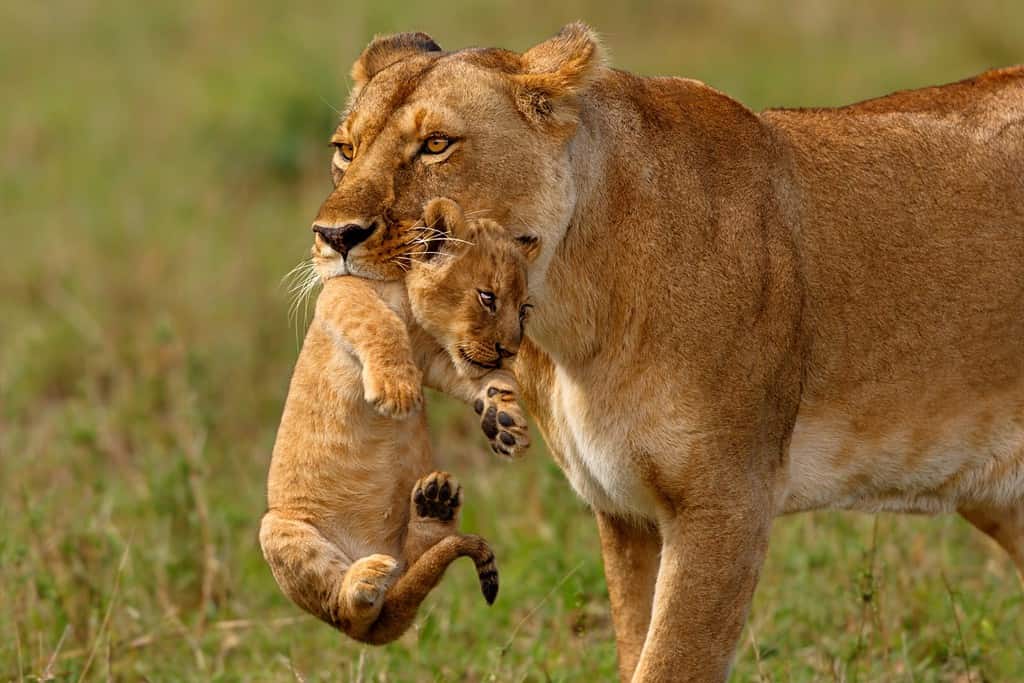
A mother lioness carries her cub harmlessly by the scruff of its neck.
©Maggy Meyer/Shutterstock.com
A lioness is an expert in providing their cubs with a safe home. She gives birth in a private den she’s prepared away from the pride, as lions have been known to kill others’ cubs. She’ll give birth to 1-4 cubs each weighing only 2.6-4.6 lbs (1.2-2.1 kg). Their eyes are sealed shut until about a week after birth and they won’t be able to walk until the three-week mark. If they stay in one place too long, a scent will build up that could attract predators. So she moves her babies to a new den every week or two, carrying them one at a time by the loose skin at the back of their necks. Must be nice to just move to a new house every time yours gets dirty!
2. Hummingbirds

Mom hummingbirds do everything it takes to care for their babies.
©ukrit.wa/Shutterstock.com
Mother hummingbirds do it all: they build the nest, incubate the eggs, and feed the babies. Since they can’t fly around to gather nectar and insects themselves, she does it and regurgitates the mixture into their open mouths. It takes so many trips to feed them, that the mother usually locates her nest close to a food source. If you put out hummingbird feeders, have a look around from an unobtrusive distance and see if you can spot one of their nests.
3. Ospreys

Ospreys build nests from sticks in the tops of trees or on utility poles.
©Joel Blazewicz/iStock via Getty Images
A live stream in Colorado in 2023 grabbed headlines as it showed a mother osprey sheltering her eggs as she was pelted with pea-sized hailstones. This is just par for the course for these dedicated raptor mothers. They’re also known to defend their nests ferociously, dive-bombing researchers and bird watchers who venture too close.
4. Wolf Spiders
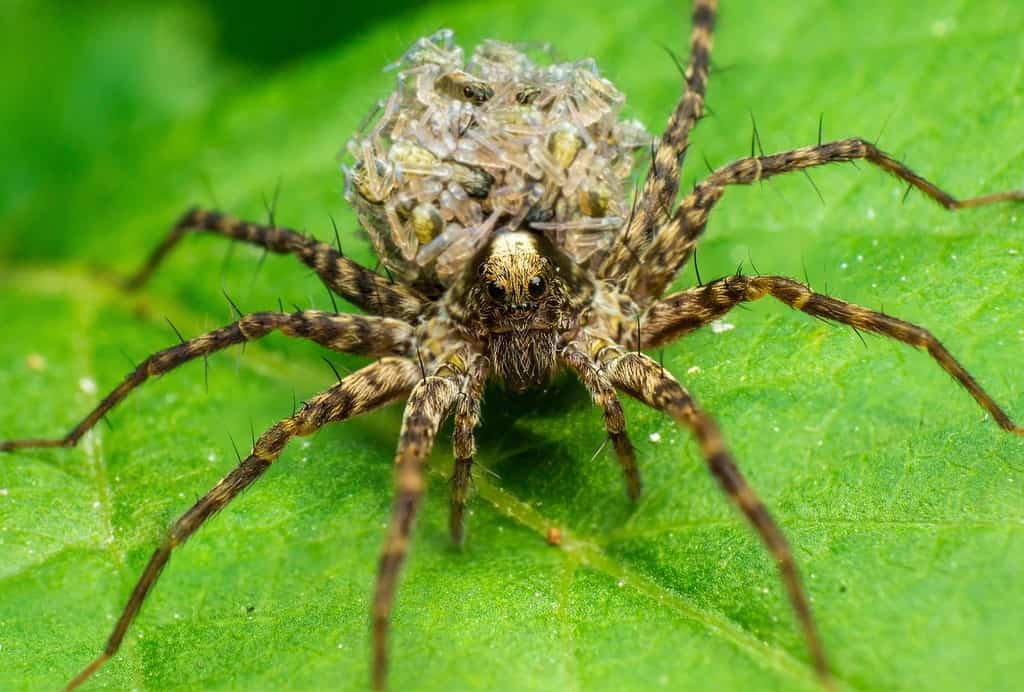
This mother wolf spider in Ukraine is carrying a dense mat of her babies on her back.
©Alexey Wraith/Shutterstock.com
Wolf spider moms take their babies everywhere. Unlike other species that attach their egg sac to a safe stationary place, these ladies drag theirs around attached to the end of their abdomens and hold it up to keep it from dragging on the ground. After the spiderlings hatch, they immediately climb onto their mother’s back, where they ride around for a few weeks before striking out on their own. That must feel like quite a weight off all 8 of her shoulders!
5. Orcas
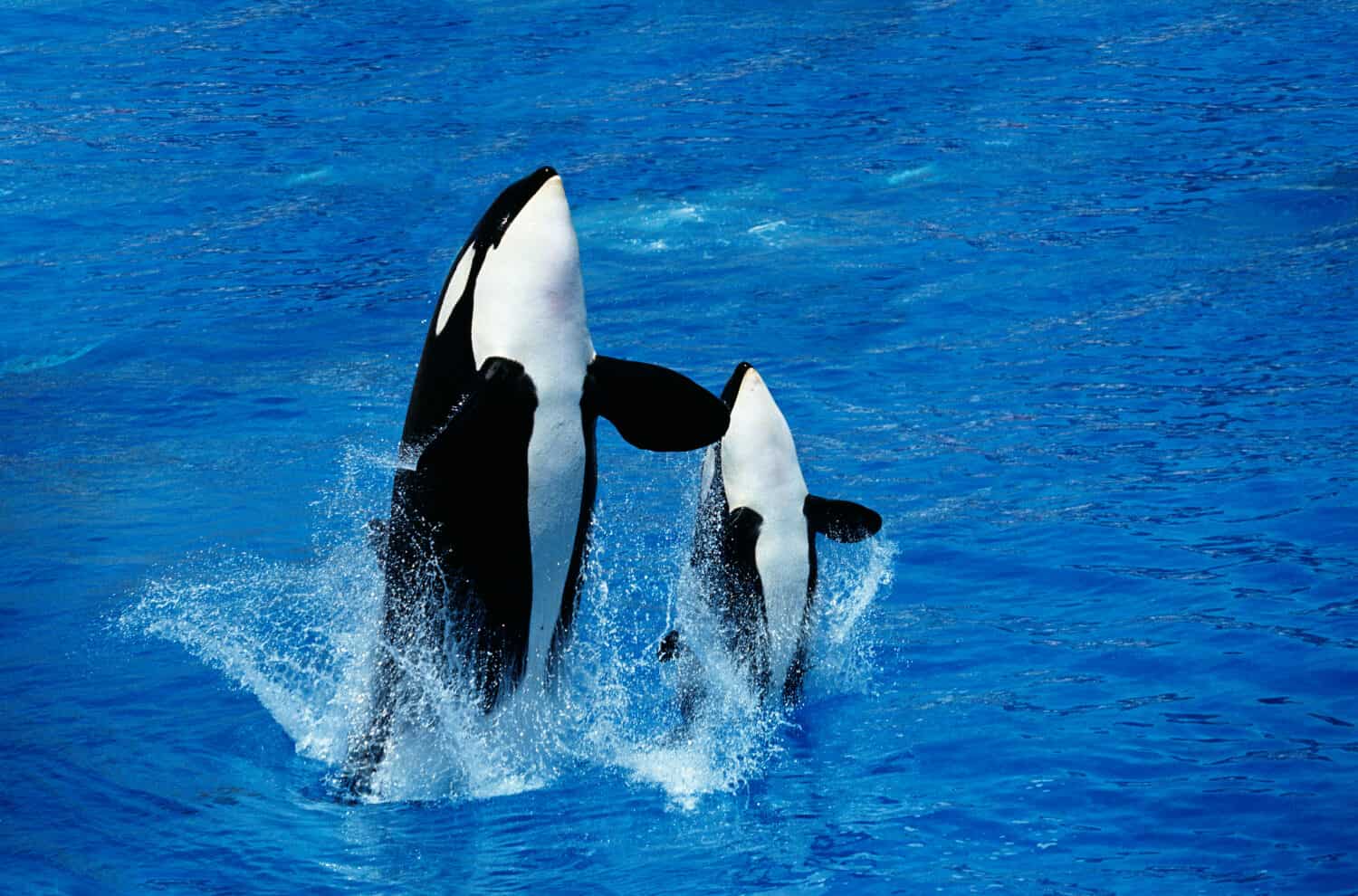
Mother orcas tend to raise lifelong “Mama’s boys.”
©slowmotiongli/Shutterstock.com
Orca moms make a lifelong career out of taking care of their children . . . but only the boys. The girls strike out on their own at adulthood. The fellas, though, are all too content to allow their mothers to defend them and even feed them salmon she’s caught. It’s not that the boys can’t feed and defend themselves, but they have no incentive to do it. Scientists think this is a survival strategy, as raising a strong male will help him be dominant and better able to pass on his (and his mother’s) genetic heritage.
6. Alligators
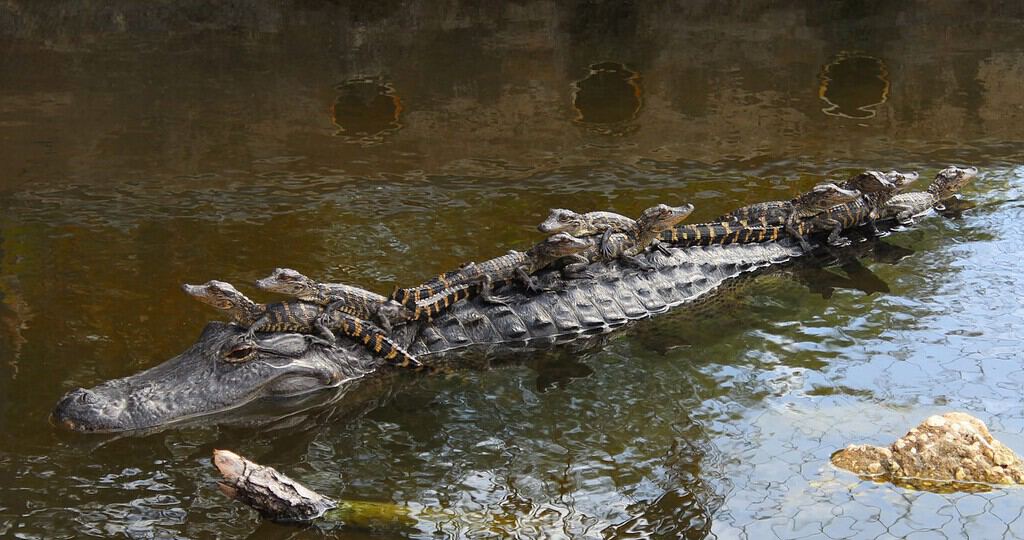
This
alligator
mom makes a nice canoe for her hatchlings.
©Marc Pletcher/Shutterstock.com
Baby alligators are born into a dangerous world. When they’re small, they’re vulnerable to all sorts of predators. In Florida’s Everglades, that includes a burgeoning population of invasive Burmese pythons. Adult alligators are also a threat, as they are more than happy to cannibalize young. Not their own, though. In fact, mother alligators will carry their hatchlings gently in their deadly jaws from the nest to the water, making as many trips as necessary to get them all where they need to be.
7. Strawberry Poison-Dart Frogs
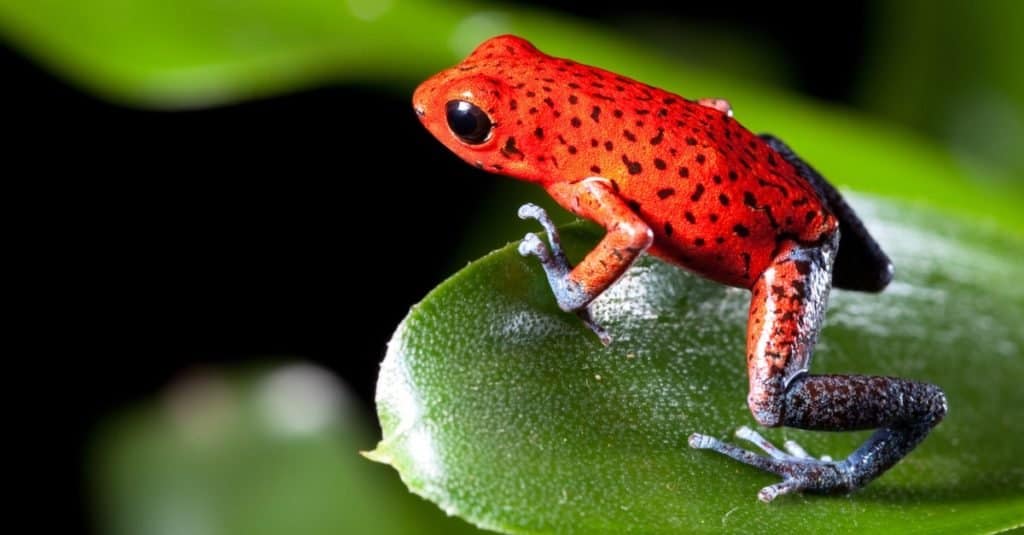
One guess what fruit the strawberry-dart frog looks like . . .
©Dirk Ercken/Shutterstock.com
Most frogs lay thousands of eggs at once and abandon them, hoping that a few will survive. Not the strawberry-dart frog. She lays only about 6 eggs at a time. After they hatch, she takes the tadpoles individually up a rainforest tree to find each one its own private nursery: a bromeliad leaf holding a pool of water. She deposits an additional unfertilized egg in the water of each pool which gives the tadpoles an alkaloid that helps protect them from predators. And then for months she will visit each one and bring them food. What an amazing animal mother!
8. Gorillas

Often gorillas show similar emotions and behaviors as human families.
©LuckyBusiness/iStock via Getty Images
Gorillas are fascinating because, sharing 98% of their DNA with humans, they look and behave similarly to us. This includes the care of their cute little infants. For their first year of life, gorilla babies nurse for at least once an hour and sleep in the same nest each night with their mothers. During the day the baby either clings to the mother or she holds them in her arms. Gorilla moms and babies stay close to the alpha silverback males for protection against other aggressive members of the group. The babies stay with their mothers for 3-4 years, and during that time their moms will not get pregnant again. So each baby gets all the love!
9. Mouthbrooding Fish
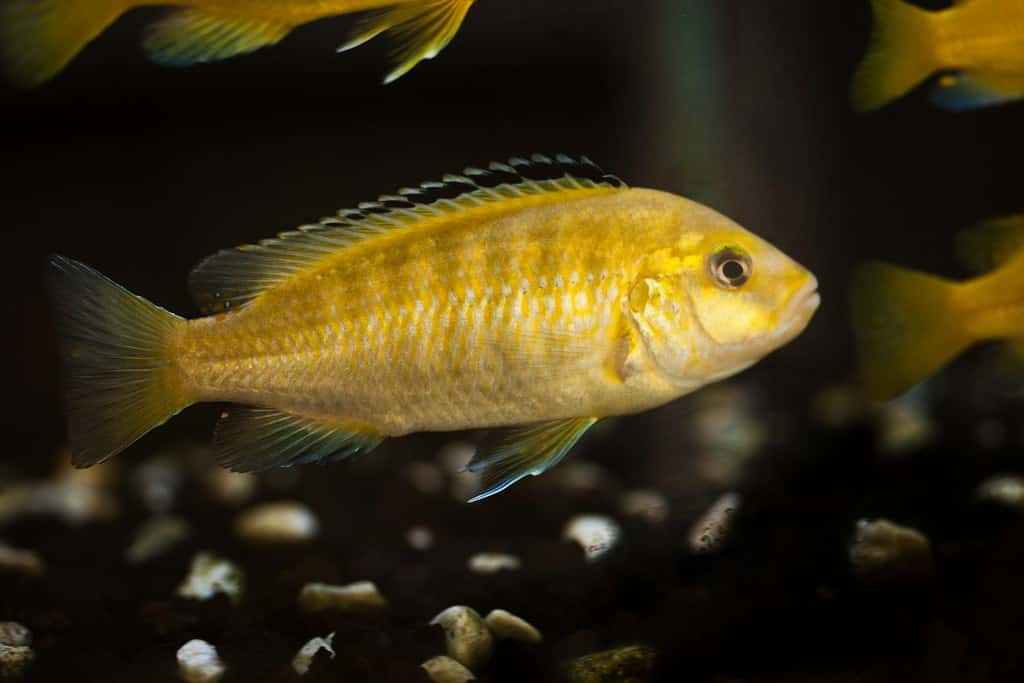
, a mouthbrooding fish, is a popular cichlid fish among aquarium hobbyists.
©Rani Restu Irianti/Shutterstock.com
There are several different fish in the family Cichlidae that carry their young in their mouths. Labidochromis caeruleus is an example of a species in which the mother is responsible for this. She carries the fertilized eggs, and then the hatchlings, in her mouth. For the three weeks or so they are growing, the mother cannot eat. This could be the greatest sacrifice of all the animal mothers.
10. Cheetahs
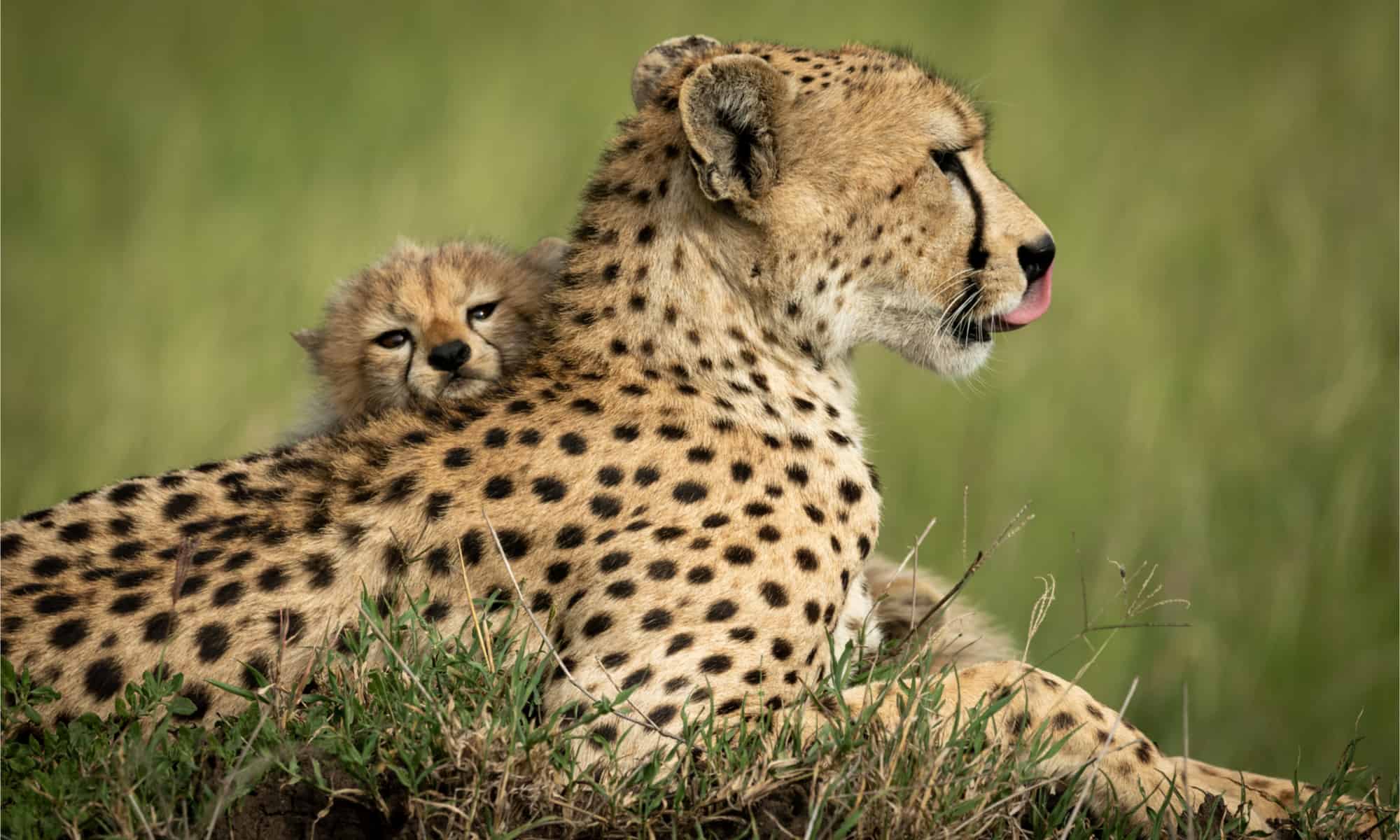
Every
cheetah
has 2,000-3,000 spots in a unique pattern, like fingerprints.
©nwdph/Shutterstock.com
Cheetahs have 1-6 cubs at a time, each weighing 8.5 to 15 oz (0.24 to 0.43 kg). The cubs are blind and defenseless at first. The mother stays with them a day or two but then leaves them to hunt. They’re vulnerable while Mom is at work, but she moves them frequently from one secluded nest to another for a couple of months. Cheetahs care for their young for the first year and a half of their life and teach them to hunt, but they are all about raising responsible adults. The brothers and sisters sometimes hang out together a while longer before splitting up and pursuing their own little cheetah hopes and dreams.
The photo featured at the top of this post is © Holly Kuchera/Shutterstock.com
Thank you for reading! Have some feedback for us? Contact the AZ Animals editorial team.







